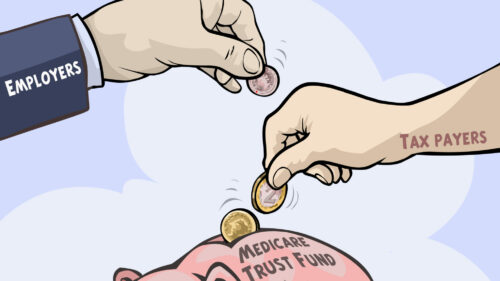Let me start this blog off with some facts.
Fact 1: Employers have tried narrow networks, tax-preferred savings accounts, high deductible health plans, disease management, and a host of other cost-saving measures in an attempt to tame ever-rising health insurance costs.
Fact 2: According the Milliman Medical Index, the average health cost for a family of four in 2020 was $28,653. This includes the amount the employer contributes, what the employee funds through payroll deductions, and the family’s out-of-pocket for copays, deductibles, etc.
Fact 3: A recent study by the Kaiser Family Foundation (KFF) found that one simple solution would lower health spending by 41 percent. This translates to a savings of $11,747 per family of four! This solution allows patients to see any medical provider of their choice and doesn’t require any new government program or any new taxes.
So, what is this earthshaking idea from the KFF? The answer — an All-Payer system.
What Is an All-Payer Health Insurance System?
The answer is this — everyone pays what Medicare pays for healthcare services.
This idea is intriguing because the gap between what the government pays and what private insurance pays for health insurance has widened over the past two decades, and healthcare pricing is wildly variable. Private prices compared to Medicare vary by geographic area, by facility, within a facility, by procedure, and by network.
The Rand Corporation put the data together and estimated the average hospital private insurance reimbursement is 241% of the Medicare reimbursement. So, eliminating price discrimination and going with an All-Payer system would save the average family of four almost $11,747. The savings would be shared between the employer and their employees in a manner consistent with the current cost sharing.
What’s the Problem with this All-Payer Health Insurance System Idea?
Lowering the cost for everyone without creating a new government program, without additional government spending, and without raising taxes seems like a no-brainer. Here’s the problem…access to quality care.
Our healthcare system is fueled by the profitability that flows from private insurance reimbursements. A swift implementation of an All-Payer system would jeopardize access to care as we know. I’m not confident America is ready to have hospitals shuttered because the economics couldn’t support that which has already been built.
What Should Be Done to Help with Health Insurance Costs?
Here’s my take. The current unbridled discriminatory pricing structure takes too much money from too many employers and too many families. We have high-quality hospitals, physicians, and technology, and yet, our health outcomes are poor compared to other countries. High-cost and poor outcomes…surely we can do better!
The All-Payer system immediately solves the cost and complexity problems, but it crashes the healthcare economy and would greatly reduce access to care for many Americans. Is the cure worse than the cost disease? All-Payer would pop the health economy balloon.
The level of price discrimination in healthcare is worrisome at best and immoral at worst. Can we start the dialogue about how to let some air out of the healthcare cost balloon by starting to close the healthcare price discrimination gap? If not, we set the stage for the government to step in to solve the problems our industry seems to ignore.







